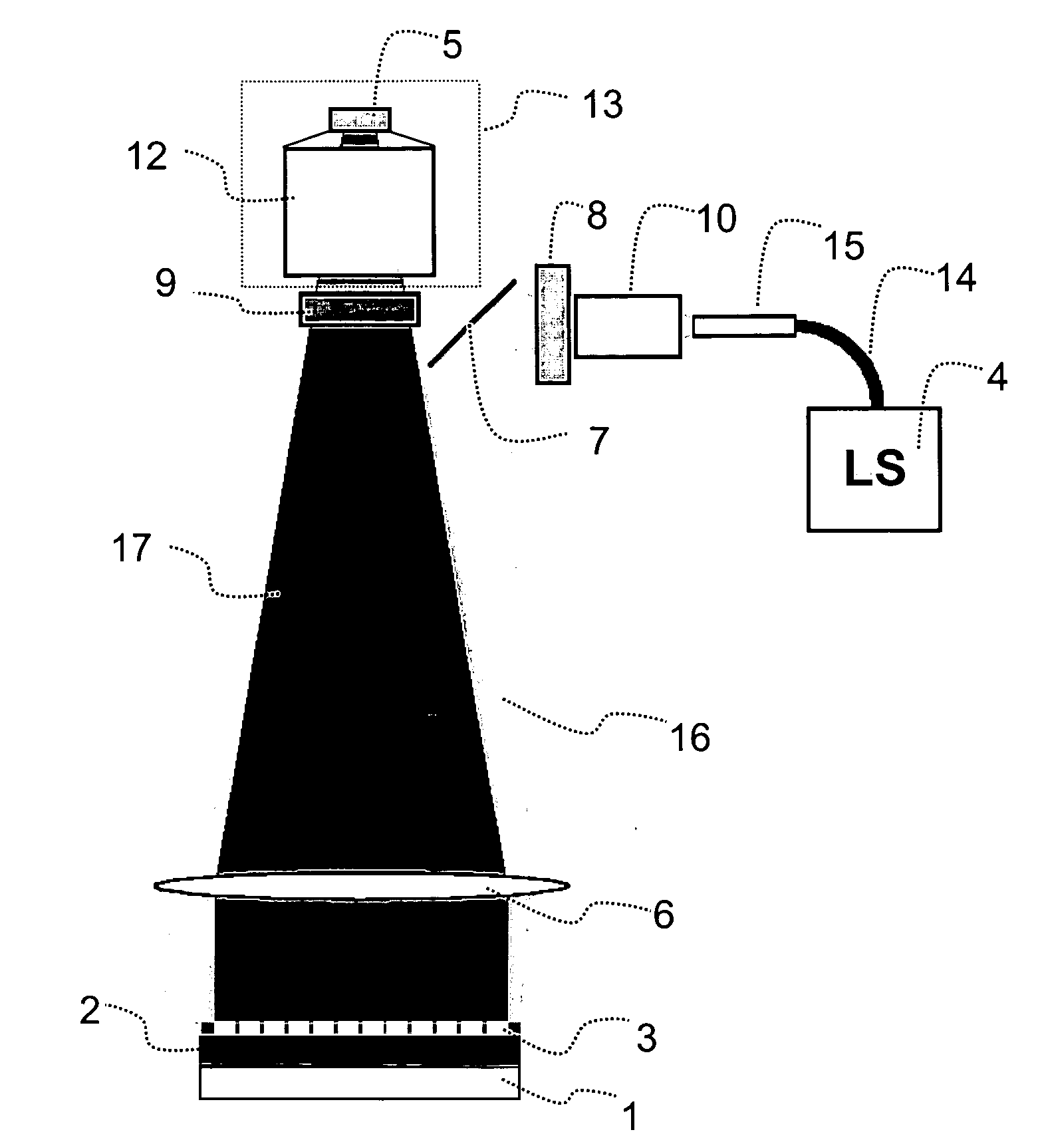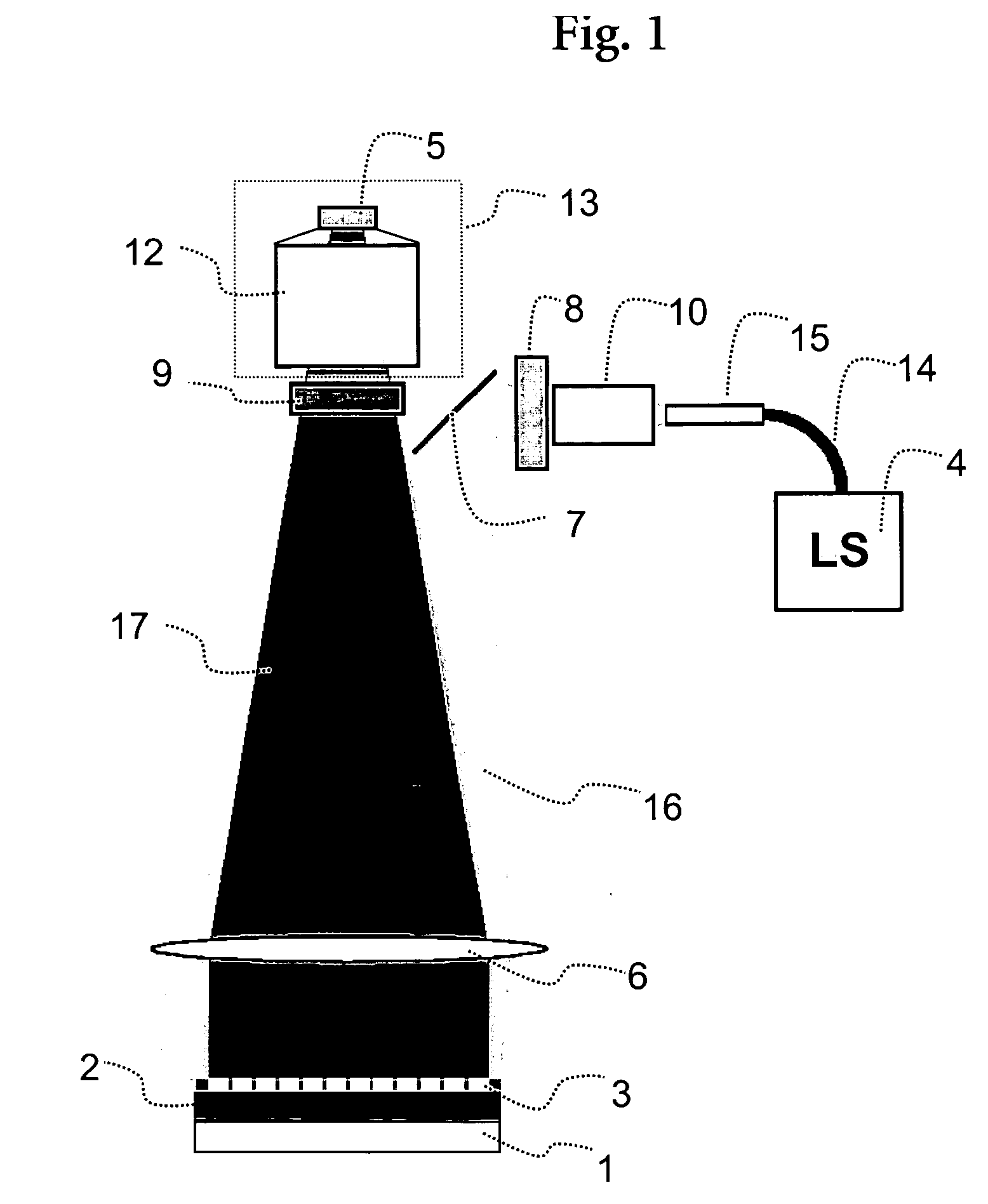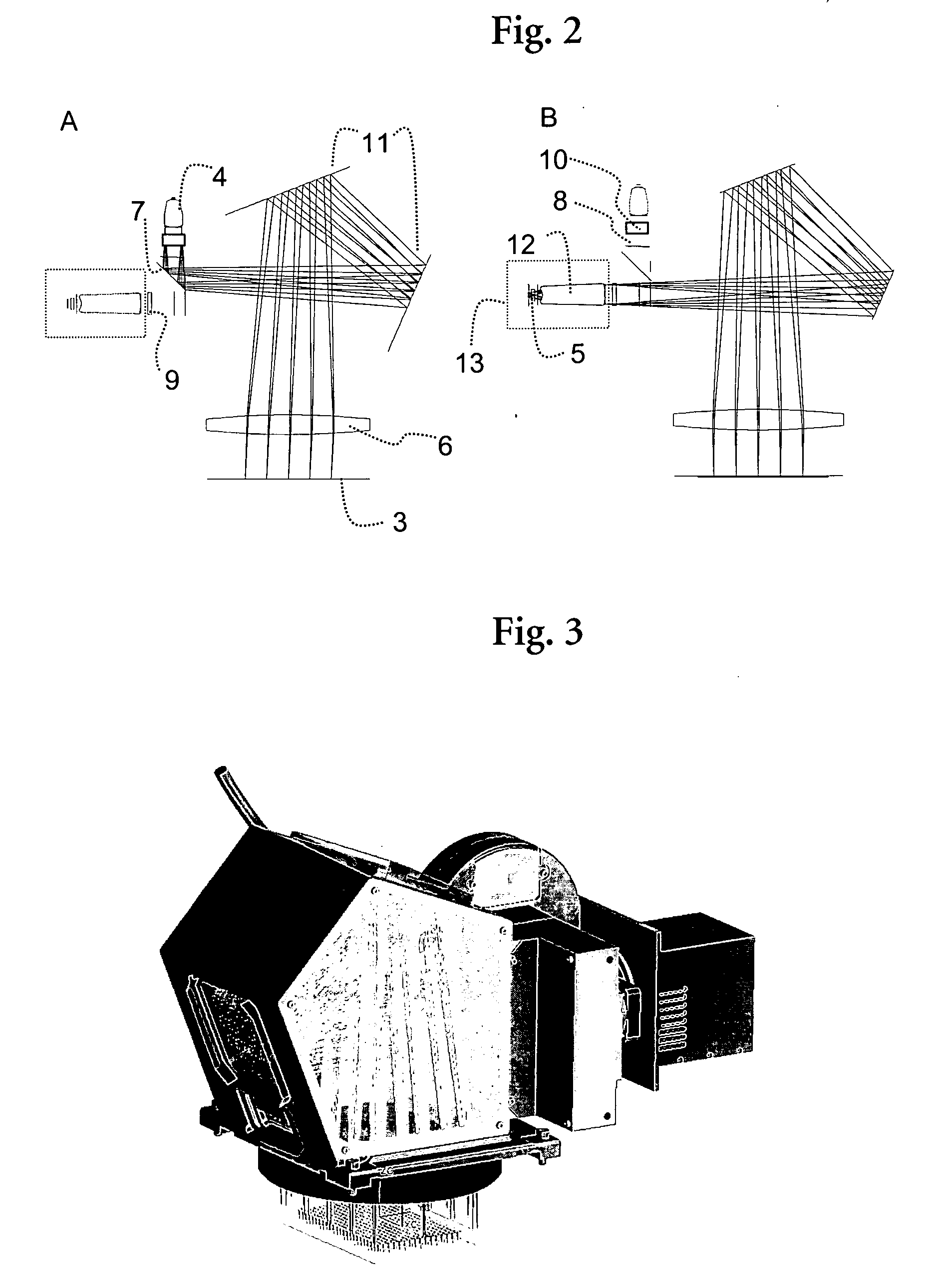Imaging fluorescence signals using telecentricity
a fluorescence signal and telecentric technology, applied in the field of dna analysis, can solve the problems of difficult to meet the requirements of the fluorescence reading device, limited size and lateral density of individual sites, and difficult illumination of the whole support, etc., and achieve the effect of accurate imaging of the corresponding fluorescence signals
- Summary
- Abstract
- Description
- Claims
- Application Information
AI Technical Summary
Benefits of technology
Problems solved by technology
Method used
Image
Examples
specific embodiments
[0164] The following examples were performed with an optical instrument as explained in the detailed description and as visualized in FIG. 3. The telecentric excitation optic was adjusted to handle frequencies from 450 to 650 nm and the telecentric imaging optic to handle frequencies from 500 to 740 nm. The light source was a Xenon lamp and as transducer a cooled ⅔″ CCD chip with 1024×1344 pixels was used. The optical instrument was designed to image an area of 83 mm×117 mm so that microtiter plates (MTP) with 96 wells (distance 9 mm; diameter 5 mm) and 384 (distance 4.5 mm; diameter 3 mm) can be used. The appropriate wavelength for excitation and imaging for certain fluorescence dyes was adjusted by filter wheels.
[0165] The telecentric excitation optic had a numerical aperture on the side of the light source of 0.35 and on the side of the MTP of 0.014. Due to geometric reasons, the light source was arranged perpendicular to the CCD chip and the excitation light beam had to be orie...
example 1
[0166] Sensitivity and Reproducibility
[0167] The sensitivity of an optical instrument as explained before was investigated with dilution series using fluorescein-sodium in water. Three different types of MTPs were tested, namely a black MTP (MTP 1), a transparent MTP (MTP 2) and a white MTP (MTP 3), and all providing about the same sensitivity. The measurements were performed at 58° C with an integration time of 1000 ms and were repeated 50 times for all points of the diagram of FIG. 5.
[0168] The 50 measurements mentioned above were used to test the reproducibility of the optical instrument, too and the progression of the intensity is illustrated in FIG. 6, exemplarily for a black MTP for two different optical instruments. Using the measurement values 20 to 50 for a fluorescein-sodium concentration in water of 85 nmol / l in 4 different wells using two MTP types and two different optical instruments, the following variations were obtained: 0.25% for MTP 1, 0.39% for MTP 2. For the w...
example 2
[0169] Crosstalk
[0170] An image of a transparent MTP with fluorescein-sodium in 5 wells is shown in FIG. 7. The image of the MTP shows two types of reflexions of the fluorescent wells. The first reflexion was detected within the distance to the neighboring wells, had the same diameter as and an intensity of about 0.5% from the well itself. The second reflexion had a diameter of around 2 to 3 times the diameter of the well itself and an intensity reduced by a factor of 2·104-3·104.
[0171] To summarize, the mean intensity at the neighboring wells is reduced by about a factor of 3·104 for the black MTP and by about a factor of 1·103 for the white MTP as well as for the transparent MTP.
PUM
| Property | Measurement | Unit |
|---|---|---|
| angle of incidence | aaaaa | aaaaa |
| angle of incidence | aaaaa | aaaaa |
| angle of incidence | aaaaa | aaaaa |
Abstract
Description
Claims
Application Information
 Login to View More
Login to View More - R&D
- Intellectual Property
- Life Sciences
- Materials
- Tech Scout
- Unparalleled Data Quality
- Higher Quality Content
- 60% Fewer Hallucinations
Browse by: Latest US Patents, China's latest patents, Technical Efficacy Thesaurus, Application Domain, Technology Topic, Popular Technical Reports.
© 2025 PatSnap. All rights reserved.Legal|Privacy policy|Modern Slavery Act Transparency Statement|Sitemap|About US| Contact US: help@patsnap.com



